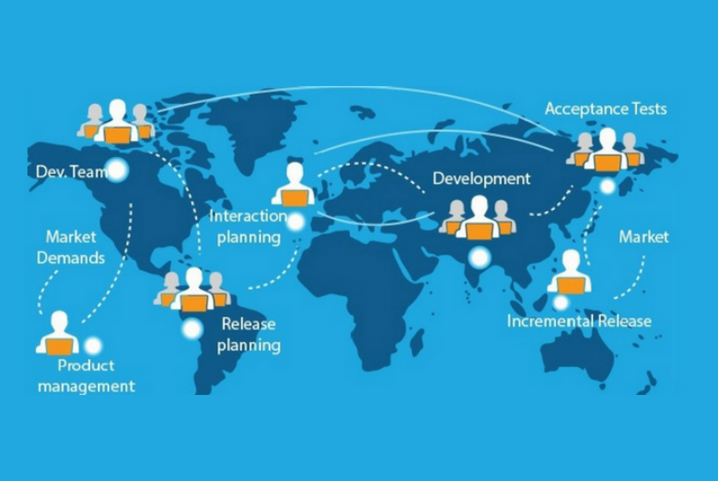Smart management of distributed workforce remains a critical challenge for most modern enterprises. The stakes are particularly high when coherence and agility are desired from a distributed development team. Agile demands a development team based in a single location, but this is not always possible. Especially in enterprises where product development is a mutual exercise between in-house and off-source developers, robust communication strategies are the key to productive outputs.

In this blog, we share 5 key agile communication strategies for managing remote teams effectively and productively.
1. Foster Continuous Integration

Continuous Integration (CI) is the practice of sharing and integrating code into a single repository. Every integration can be verified in real-time with automated builds and tests. Creating a CI culture is extremely beneficial when project managers must manage remote teams with diverse technical and geographical boundaries.
2. Prioritize Builds
Software builds, or code builds foster project agility. Prioritizing regular builds help in catching errors in the earlier stages. The goal should be to find out – when does a build breaks before the final testing phase and correct them as soon as possible. It doesn’t have to be daily, but a weekly schedule is a must. For a development team separated by time-zones, identify the time which is closest to ‘end-of-day’ for most teams and create daily builds for this time.
3. Create a Team Spirit
Custom software development is as much a people process as a technical process. No matter how far apart teams are, they must be well-aligned with the end goals and work cohesively towards it. Encourage knowledge sharing at all levels, including daily updates. Moreover, project managers must strive to prevent monotony in communication by encouraging team members to share their views on the entire scope of the project and not necessarily the day’s assignment alone.
4. Create Sync Between Designers and Analysts
All successful products have one thing in common, i.e., a great user experience. While the developers and designers need not necessarily know the end-users in person, this must not act as a barrier in successful product creation. Project managers must strive to overcome this challenge by streamlining communication between developers/designers and business analysts. User stories are intrinsic to agile development, and it is only by breaking the boundaries between designers and business analysts can one gets a clear view of the end-user perspective.
5. Choose the Right Communication Tools and Escalation Matrix
Email, text messaging, and instant messaging do not at all fit into the current communication needs of distributed teams. Distributed teams must opt for communication tools that bring different channels under one roof. The communication tools must facilitate collaboration and coordination irrespective of where the remote teams are. Also, there should be a clear escalation matrix to handle potential problems across multiple contexts.
These are some of the secrets to effective agile development in distributed teams. Agile development in a distributed system has many moving parts. At PSI, we help enterprises seamlessly integrate agile development and testing environments into existing business logic and workflows. We ensure a continuous integration environment for shorter development cycles, increased reliability in deployment, and delivery practices. Our offshore software development services are designed to work as an extended arm for your in-house development team. Please visit our website or call us to know more about our services.









